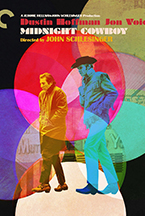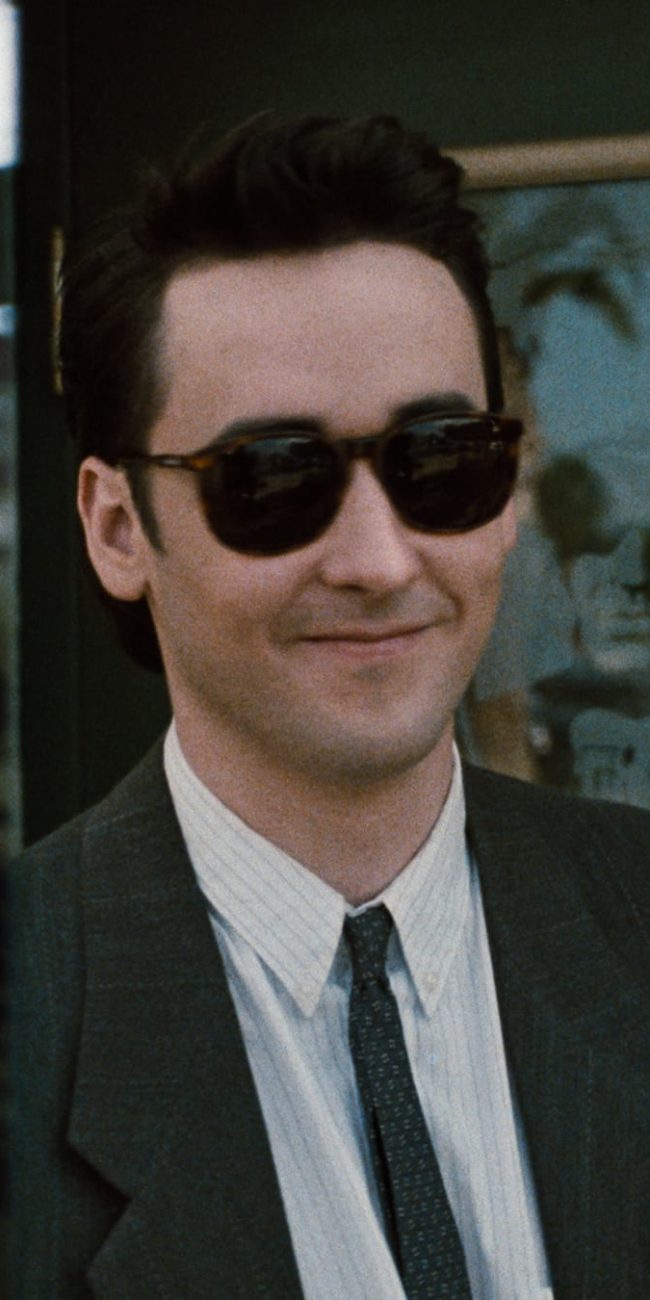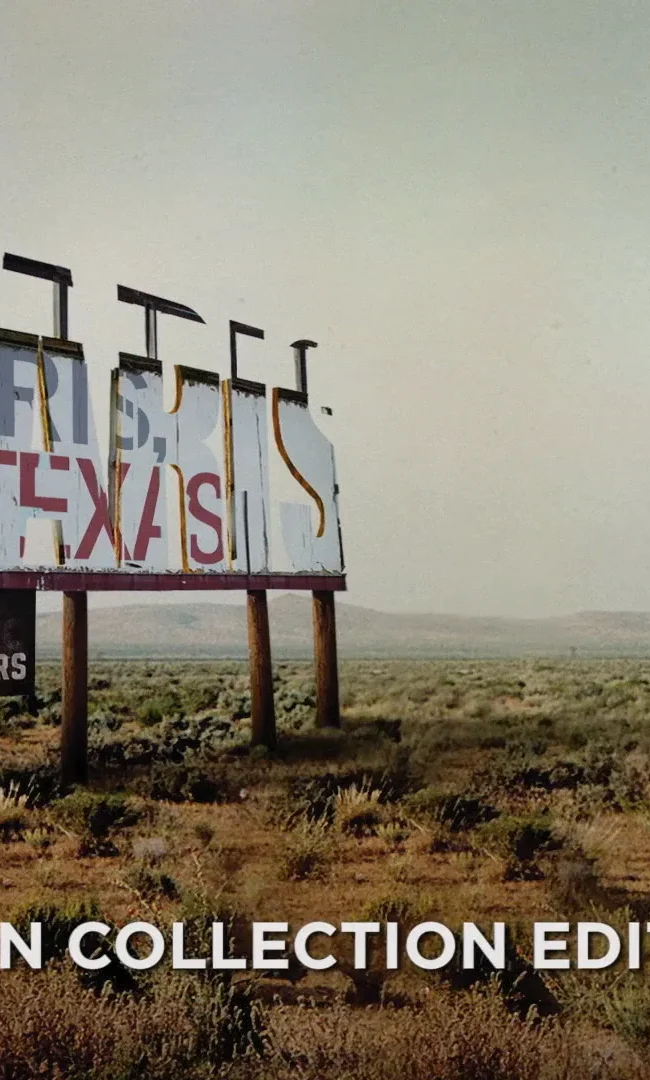THE CURBSIDE CRITERION: MIDNIGHT COWBOY

(We here at Hammer to Nail are all about true independent cinema. But we also have to tip our hat to the great films of yesteryear that continue to inspire filmmakers and cinephiles alike. This week, our new addition to the site, “The Curbside Criterion” continues where HtN staff can trot out thoughts on the finest films ever made. This week Brad Cook dives into the new Blu-Ray release of Midnight Cowboy the indelible, one-of-a-kind film from John Schlesinger.)
In one of the bonus features on this new Criterion Blu-ray release of Midnight Cowboy, producer Jerome Hellman notes that director John Schlesinger was enamored with New York City when he first visited. According to Hellman, Schlesinger noticed many little details that had become invisible to lifelong city dwellers like him, and those observations informed many moments in the movie.
That keen eye permeates all of the film, in fact, from the haunting opening shot of a little boy alone on a playground in an abandoned drive-in movie theater to images of sparse Texas landscapes to a vision of New York that eschews iconographic shots of famous landmarks, save for a skyline shot or two.
Schlesinger’s amazing eye for ironic detail also serves him well in the New York City part of the story, such as when the poor, starving main characters walk by a billboard advertising delicious steaks. This isn’t a version of the city steeped in glitz and glamor – it’s one with a clear two-tiered system that could be considered caste-like. There’s a delineation between the haves and have-nots, and those in the latter category are almost assured of staying there, so they can serve the needs of the haves.
Midnight Cowboy is told through the eyes of Joe Buck (Jon Voight), a pretty-faced but empty-headed cowboy who leaves Texas in search of a new life as a hustler in New York. He proves to be inept at his new profession, though, as his first score convinces him that he should pay her, and his new acquaintance, Ratso Rizzo (Dustin Hoffman), cons him out of 20 bucks.
However, his naïveté also keeps him from falling to the dark side, such as when he encounters Rizzo again and strikes up a friendship rather than beating the poor crippled man. Rizzo lives in an abandoned building and invites Buck to join him. The impoverished duo traverses the mean streets of lower Manhattan, seeking enough money to realize Rizzo’s dream of living in Florida.
Both men survived broken childhoods that left them unable to relate to other people other than in transactional terms, but affection begins to grow between them and they develop a true friendship. The brilliance in Voight and Hoffman’s performances comes in the little things, like Buck using his shirt to wipe sweat off Rizzo’s head before they enter a party. This was a movie that catapulted Voight into the spotlight while showcasing the versatility of Hoffman, who was fresh off his performance as a very different kind of character in The Graduate.
This new Criterion edition of the film includes two new bonus features while recycling a lot of content that’s been found elsewhere. It also sports a 4K digital restoration that was approved by cinematographer Adam Holender, who narrates a series of images and video clips in one of the new bonus pieces. Holender spends 26 minutes talking about how he shot the movie, imparting a lot of interesting information for those who enjoy hearing the technical details of moviemaking (I’ll raise my hand here).
The other new piece features Michael Childers, Schlesinger’s life partner, looking back on the making of the movie while vintage photos that he took on the set, as well as at Schlesinger’s home, pass by on the screen. He also offers some insight into those images, noting how, for example, he was able to capture Hoffman and Voight in some candid moments during filming. He also imparts some interesting trivia, such as the fact that Bob Dylan wrote “Lay Lady Lay” for the movie but it wasn’t included.
The rest of the bonus stuff includes:
- A 1991 commentary with Schlesinger and Hellman was brought back from Criterion’s ancient laserdisc edition of the movie. (Schlesinger died in 2003.) They were recorded separately and the audio was woven together to create a lively discussion that features plenty of insight into the movie. Schlesinger even has some regrets about aspects of the film, such as the party scene, which he felt could have been cut back a bit.
- The Crowd Around the Cowboy (9 minutes): This is a behind-the-scenes piece that was shot during the making of the movie by Finnish cinematographer Jeri Sopanen. As its title implies, it focuses on the crowds that often gathered while the movie was being shot on the streets of New York.
- After Midnight: Reflecting on a Classic 35 Years Later (30 minutes): This look back on the film was created by MGM for their 35th anniversary edition in 2004. It features Voight, Hoffman, Hellman, Holender, actresses Sylvia Miles and Jennifer Salt, and others reminiscing about the making of the movie.
- Controversy and Acclaim (11 minutes): This is another piece from the 2004 MGM DVD that looks back on the ratings board’s decision to grant Midnight Cowboy an X rating, making it the only X-rated movie to win a Best Picture Oscar. Hellman recalls that after the Academy Awards telecast, the MPAA offered to give the movie an R rating if he would slice just one frame out of it, so they could say they re-rated it based on an edit. He told them to stuff it. If you’ve never seen the film before, you might wonder what could have possibly led to such a severe rating: it was because Bob Balaban’s character’s head drops out of the frame to service Buck in a movie theater. Yes, that a shocking moment back then.
- Waldo Salt: A Screenwriter’s Journey (58 minutes): Midnight Cowboy was redemptive for Salt, who suffered through being blacklisted in the 50s and ended up winning an Oscar for the movie. This 1990 documentary traces his career through archival interviews with him as well as new clips with Hoffman, Voight, Robert Redford, and others. Peter Coyote provides the narration.
- John Schlesinger interview (16 minutes): This is a discussion from 2000 that focuses more on the theme of homosexuality in the director’s films, particularly Sunday Bloody Sunday. He didn’t seem perturbed by the homophobia that he witnessed on set – he made his movies in an era in which such attitudes were more common, so he took it in stride, but it’s a shame that he had to do so.
- John Schlesinger BAFTA tribute (34 minutes): From 2002, this is a collection of excerpts from the British Academy of Film and Television Arts’ tribute to the director at the Egyptian Theater in Hollywood. Voight, Hoffman, and others give their thoughts.
- Jon Voight on The David Frost Show (15 minutes): This 1970 interview has the actor talking about his attempts to break into show business, which included taking a stab at stand-up comedy. I did not know that.
- Jon Voight screen tests (7 minutes): Salt conducted these tests, in which he bickered with Voight in an attempt to see how his character would respond to being challenged, something that happens a lot in Midnight Cowboy. You can see how Voight was beginning to shape his character’s mannerisms and speech, which wisely avoided a strong stereotypical drawl.
A theatrical trailer rounds out the platter. The usual Criterion printed material is a fold-out with an essay by film critic Mark Harris.
– Brad Cook (@BradCWriter)











